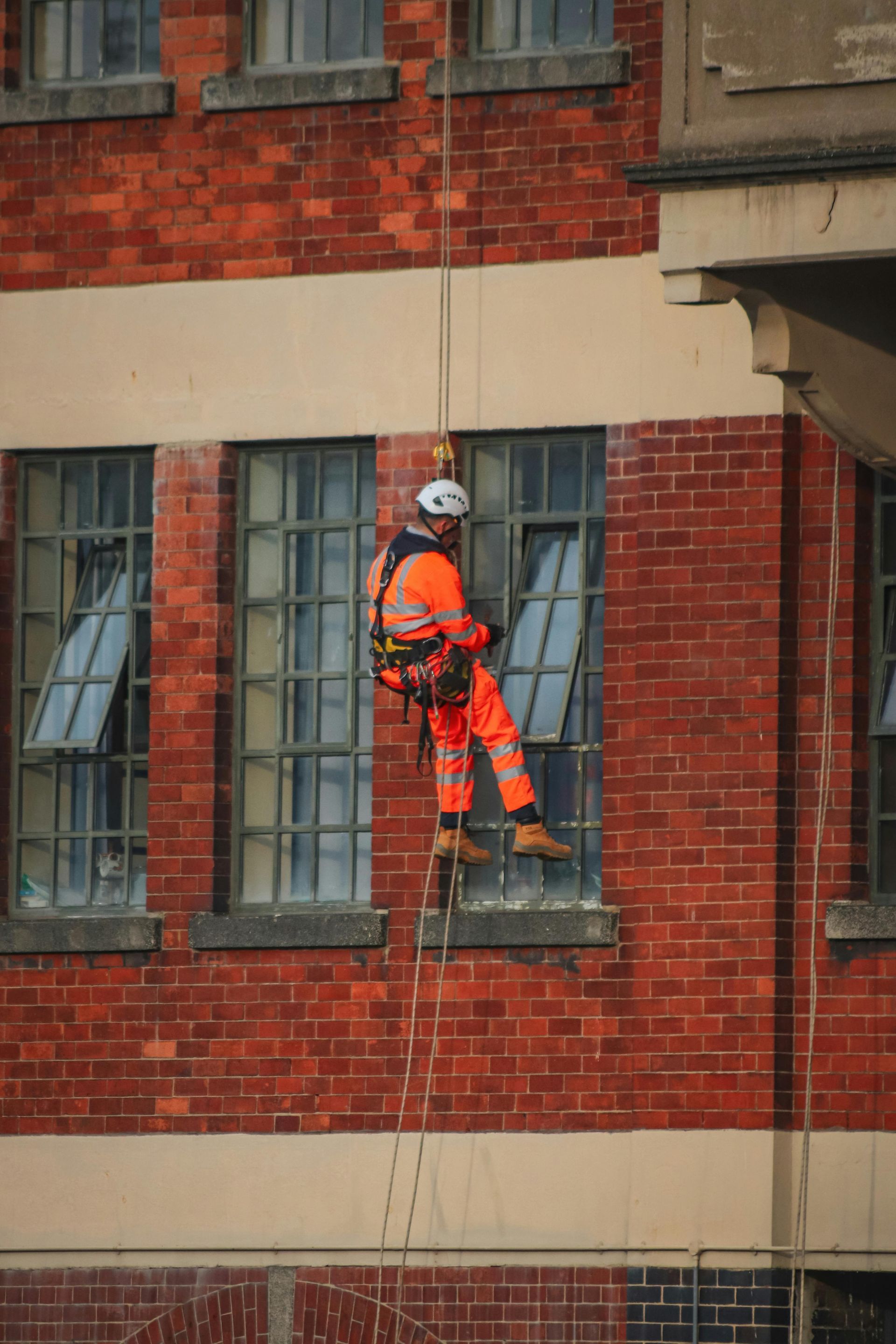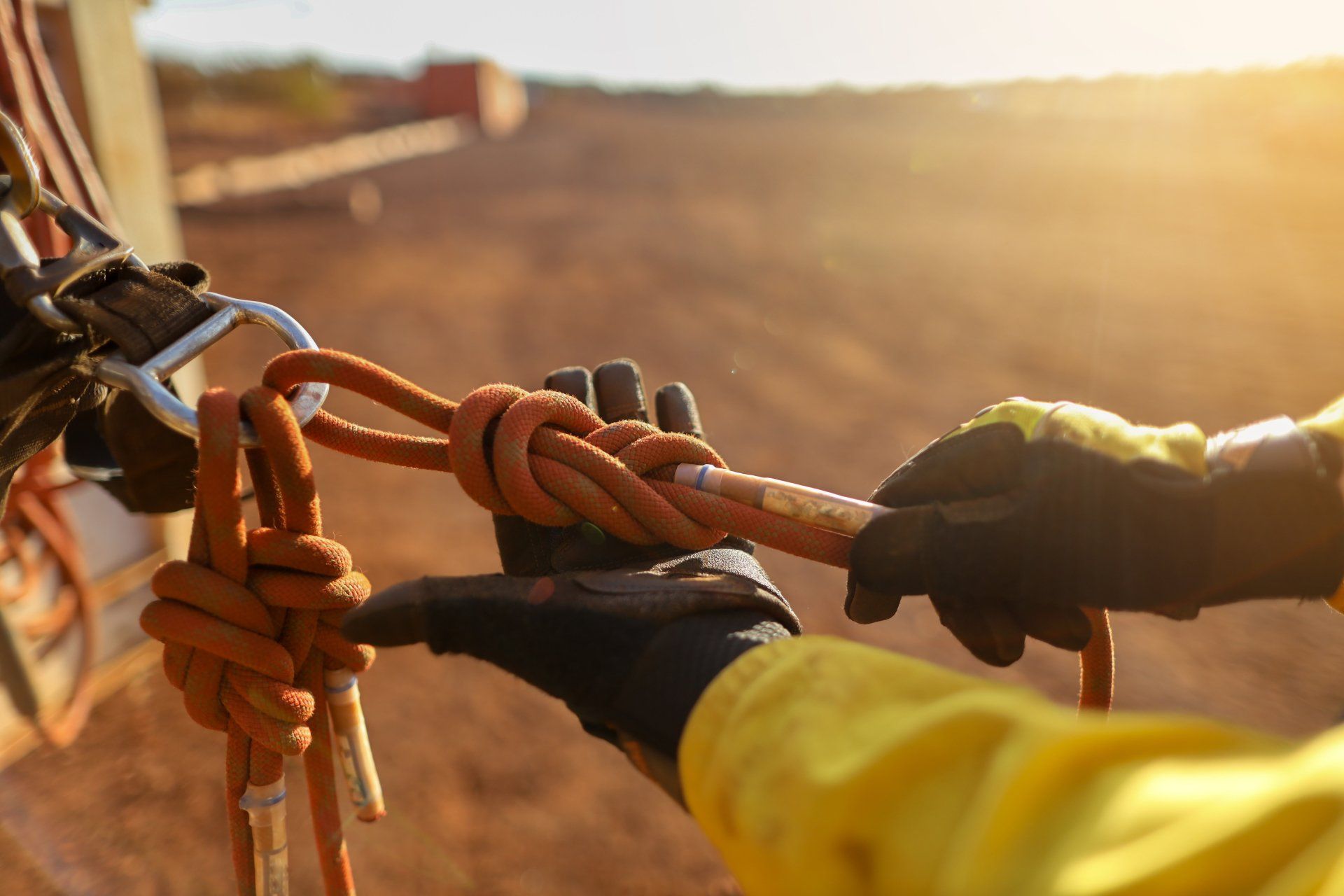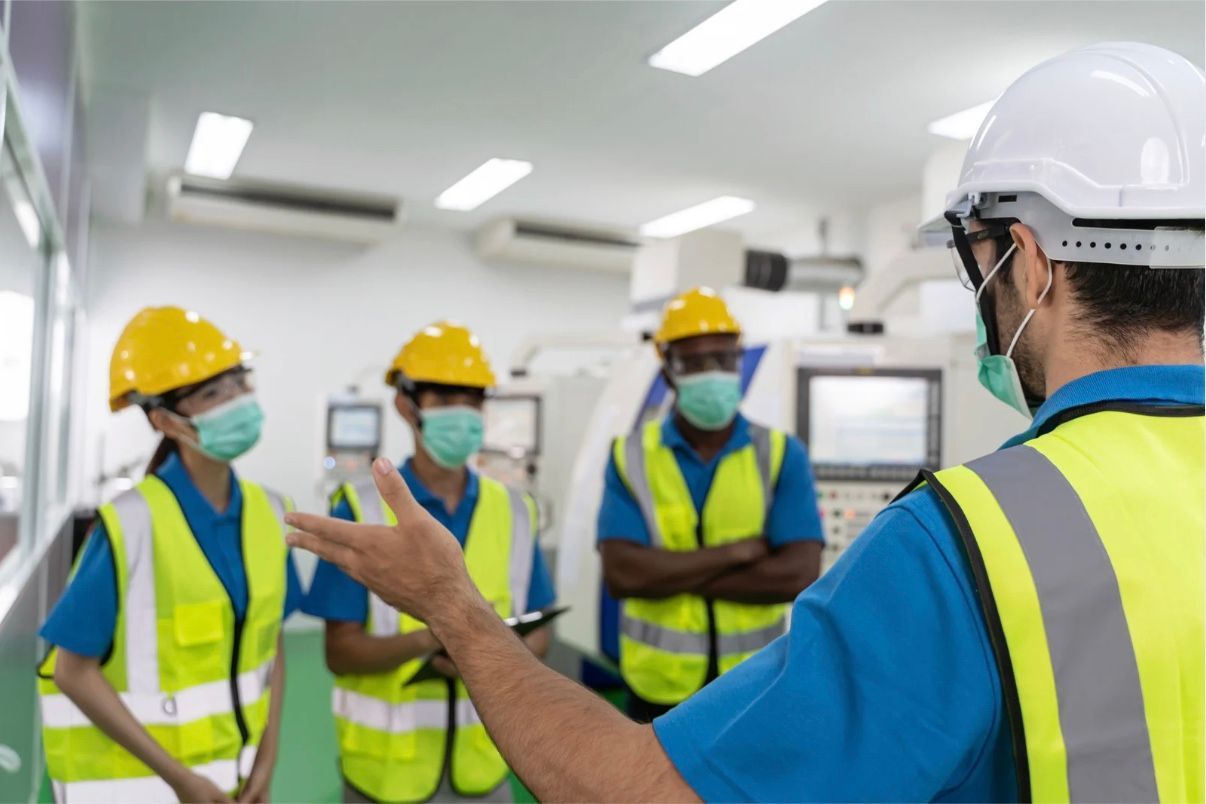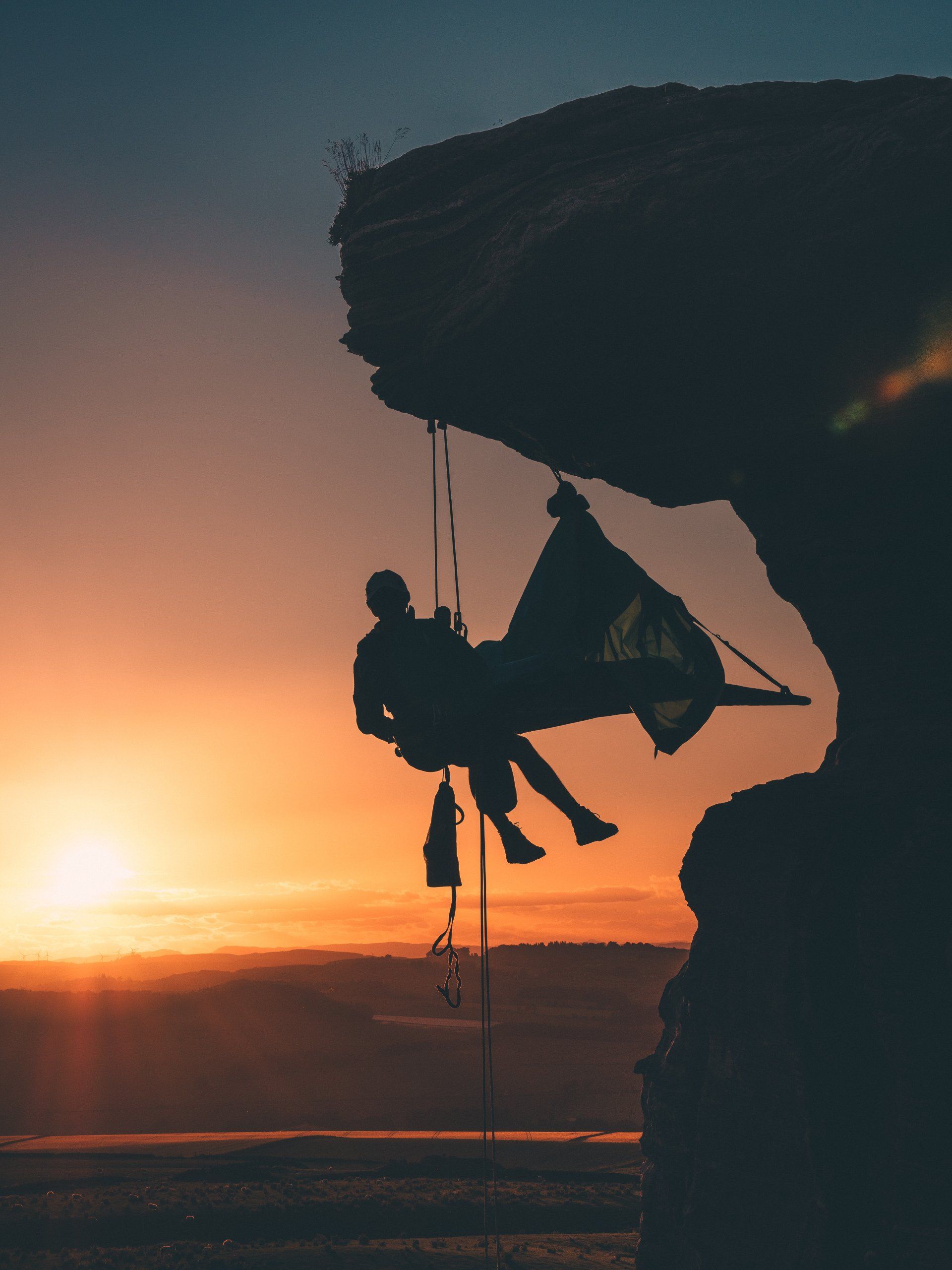IRATA Level 3 Training: The Complete Guide to Rope Access Supervision

IRATA Level 3 Training: The Complete Guide to Rope Access Supervision
If a rope access Level 1 course got you started and becoming a Level 2 rope access technician expanded your skills, then IRATA Level 3 training is the summit. This internationally recognised certification makes you a rope access supervisor, capable of leading teams, planning jobs, and carrying out the most advanced rescues. Here’s everything you need to know about IRATA's training, assessment, certification, revalidation, and career opportunities at the highest level.
What is IRATA Level 3 and why it matters
IRATA Level 3 training is the highest certification in the Industrial Rope Access Trade Association’s global training framework. It is the point at which rope access stops being just a technical skill and becomes a position of leadership and responsibility.
At this level, you’re not only expected to perform the most complex manoeuvres and rescues, but also to plan jobs, prepare documentation, manage safety systems & risks, and supervise entire teams. Every rope access project requires at least one IRATA Level 3 on site, which makes this qualification essential for progression and highly valued by employers across industries.
Who should take IRATA Level 3 training
This training is designed for technicians who already hold Level 2 and want to take on a supervisory role. It suits people who are confident in their technical ability and now want to step into management, whether offshore on rigs, in the renewables sector, construction, or geotechnical engineering.
For many rope access technicians, IRATA Level 3 training is not just a promotion — it’s a career-defining milestone that brings higher pay, international opportunities, and the authority to lead rope access teams safely and effectively.
IRATA Level 3 prerequisites: experience and documentation
To qualify for this IRATA Level 3 training course, you’ll need to show proven experience. Candidates must hold a current Level 2 certificate, be at least 18 years of age, and have logged at least 1,000 rope hours over 12 months at Level 2. These hours must be verified in your official IRATA logbook by project supervising Level 3s.
You’ll also need a valid first aid certificate and the physical fitness to take on demanding rescues and rigging operations. Meeting these prerequisites ensures that only experienced technicians attempt IRATA Level 3 training, keeping both the assessment and the qualification to the highest standards.
IRATA Level 3 training: how the 6-day course is structured
At Dangle Academy, the IRATA Level 3 training course runs across six days: five full days for training and one for independent assessment. Unlike the IRATA Level 1 and 2, this week goes beyond rope techniques to prepare you for supervisory duties.
The training begins with a refresher of Level 1 and 2 rope skills to confirm your foundations are solid.
From there, the focus shifts quickly into advanced rigging: building complex anchors, tensioned rope systems, and high-lines suitable for heavy loads and multiple technicians.
By midweek, the emphasis turns to advanced rescues. You’ll practise casualty rescues, complex extractions, and cross-haul evacuations through deviations and re-belays. These scenarios are designed to replicate the kinds of emergencies that only a rope access Level 3 would be expected to manage.
The final day of training is different in tone. Instead of being rope-focused, it’s about planning and leadership. You’ll learn to write risk assessments and method statements (RAMS), deliver toolbox talks, inspect equipment, and manage a team. This day finishes with a mock assessment to prepare you for what’s ahead.
On day six, the independent IRATA Assessor takes over. You’ll be asked to demonstrate advanced rigging and rescues under pressure, and you’ll sit written and verbal assessments covering legislation, planning, and supervisory responsibilities.
This extended structure gives you both the technical confidence and the leadership skills you need to pass the demanding assessment and step into your new role as a rope access supervisor.
IRATA Level 3 training syllabus: what you will learn
The IRATA Level 3 training syllabus combines advanced rope techniques with leadership and safety management. You’ll cover:
- Rigging complex anchor systems, high-lines, and tensioned ropes
- Casualty rescues, confined-space extractions, and cross hauls
- RAMS preparation and risk management
- Supervising Rope Access Level 1 and Rope Access Level 2 technicians
- Conducting toolbox talks and leading safety briefings
- Inspecting, managing, and recording equipment
- Applying the IRATA ICoP and other regional regulations
This balance of technical and supervisory content is what makes IRATA Level 3 training unique and so highly regarded.
IRATA Level 3 assessment: what to expect
The assessment is both practical and theoretical. You’ll need to prove you can build advanced rope systems and carry out rescues under observation. You’ll also be tested on your ability to lead a team, make safe decisions, and apply legislation and standards in real-world contexts.
The written and verbal sections of the assessment check your understanding of planning, safety systems, and equipment inspection. Passing confirms your competence not just as a rope access technician, but as a leader capable of managing others safely.
IRATA Level 3 certification validity and revalidation
IRATA Level 3 Certification is valid for three years after training. To remain current, you must revalidate before expiry, either at Level 3 or stepping down to Level 2 if not actively supervising. If you have been away from rope access for more than 180 days, you’ll need refresher training before returning to work.
Career opportunities with IRATA Level 3
Once qualified, career opportunities expand significantly. Many Level 3s work offshore in oil and gas, where they supervise maintenance and inspection teams. Others move into wind energy, leading crews on turbine blade repairs and complex tower rigging.
In the construction sector, IRATA Level 3 supervisors often take charge of rope access work such as bridge inspections, or work on high-rise towers, and stadiums. In geotechnical engineering, Level 3s are trusted to manage slope stabilisation projects that involve high-risk rigging and rescues. Telecommunications also offers opportunities, with supervisors leading teams on tower installations and antenna work.
Wherever rope access is needed, a well trained IRATA Level 3 is required — meaning your qualification guarantees demand for your skills.
What employers look for in new IRATA Level 3 supervisors
Employers hiring IRATA Level 3s after training are looking for more than rope skills. They want leaders who can mentor junior technicians, take ownership of safety systems, and demonstrate calm decision-making under pressure. A strong logbook showing varied Level 2 experience is vital, as is confidence in planning and executing complex rescues.
Soft skills matter just as much. Clear communication, professionalism, a strong work ethic and the ability to organise a team are traits that separate outstanding supervisors from average ones.
How to prepare for IRATA Level 3 training
Preparation is the key to success. Revise all your Level 1 and Level 2 techniques in advance so they’re second nature. Make sure your logbook is signed and accurate, and keep your first aid certificate up to date. Take a look at our IRATA Level 3 Training pre-course manual
Physical fitness also plays a role: rescues at this level can be physically demanding, so stamina and strength are important. Finally, read up on the IRATA ICoP and relevant legislation, as theory knowledge is just as crucial as rope ability at this stage when preparing for IRATA Level 3 training.
Equipment used during IRATA Level 3 training
You’ll train with the full range of rope access kit, from harnesses, twin ropes, ascenders, and descenders to pulleys and hauling systems. At this level, however, the emphasis is not just on use but on management. You’ll be expected to carry out inspections, manage equipment logs, and ensure traceability in line with IRATA standards.
IRATA Level 3 safety and the system of work
At Level 3, you’re the one responsible for making sure the job follows the IRATA International Code of Practice. That means preparing RAMS, delivering toolbox talks, ensuring equipment is checked and logged, and having a rescue plan in place before any work begins.
In practice, this makes IRATA Level 3 training the most accountable role in industrial rope access. You are the link between the workforce and management, ensuring the job is done both safely and efficiently.
Your first year after IRATA Level 3: what to focus on
The first year after qualifying is about consolidating your supervisory skills. Many new IRATA Level 3s focus on building experience across varied sites, mentoring junior colleagues, and gaining confidence in planning and rescue readiness.
It’s also a good time to expand your trade skills — such as NDT, coatings, or rigging certifications — which add value to your role as a supervisor. Staying up to date with legislation and best practice ensures you remain an asset to any employer.
How long does the IRATA Level 3 Training take?
Six full days on-site at our Belfast academy — five days of intensive coaching followed by a dedicated sixth day for the independent IRATA assessment.
At Dangle Academy, we’re proud to be the only provider across Northern Ireland and the Republic of Ireland that gives you the full six-day schedule every week. That extra time isn’t padding — it’s how we maximise your chances of success and passing.
What do I need to enrol?
A current (in date) IRATA Level 2 certificate, 1,000 logged hours at Level 2, a minimum of 12 months’ experience as a Level 2 rope access technician, and a valid first aid certificate ahead of assesment day.
What makes Level 3 different from Level 2?
IRATA Level 3 training is a step up into supervision. It prepares you to plan, lead and sign off rope access work safely and efficiently.
Can I supervise a team internationally with an IRATA Level 3 certificate?
Yes. After IRATA Level 3 training you are recognised worldwide, allowing you to supervise teams on international projects. Some countries may also require local inductions or additional site-specific training however.
Why Choose Dangle’s Academy?
Here at Dangle, we pride ourselves on offering a wide range of professional and comprehensive inspection, access, coatings, and composite (IACC) industrial services and training courses to cater to the needs of both the private and public sectors. Our dedication to providing high-quality work at height solutions and training has helped us establish a strong reputation in the industry.
With a team of highly skilled and experienced professionals, we are committed to delivering exceptional results that not only meet but exceed our clients' expectations. Our on-site working at height services are designed to minimise maintenance costs in the long and short-term, allowing our clients to save on valuable resources.
Located in Belfast, Northern Ireland, our headquarters serve as the centre of our operations across Ireland. However, we also have a Dangle office based in Scotland, ensuring that we can extend our services to a wider clientele across the United Kingdom. No matter where you are located, our team is always ready to assist you with your industrial maintenance or training needs.
If you would like to learn more about how our dedicated team can help you, we encourage you to get in touch with us today. Our friendly and professional staff are always available to provide you with the information and support you require.


